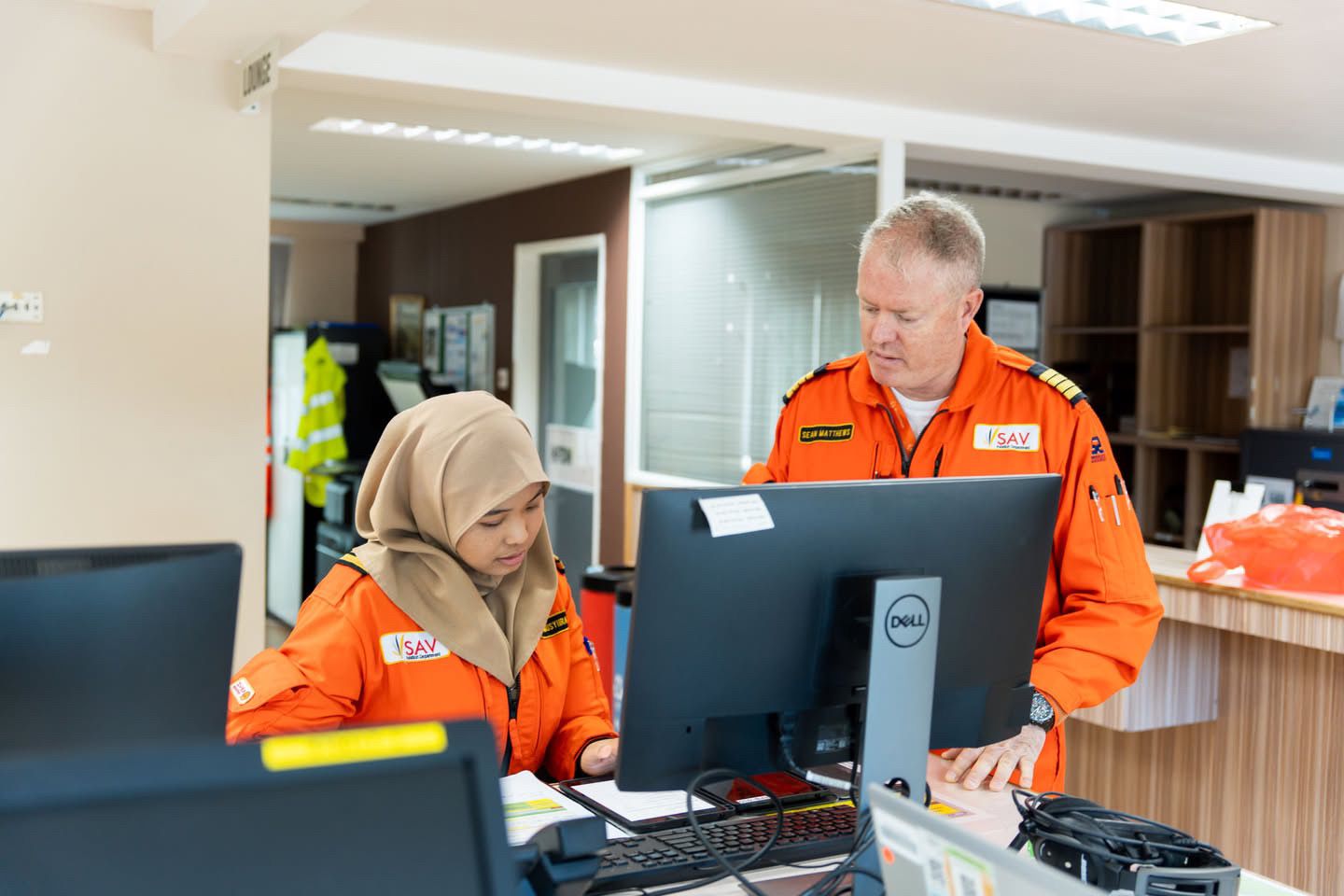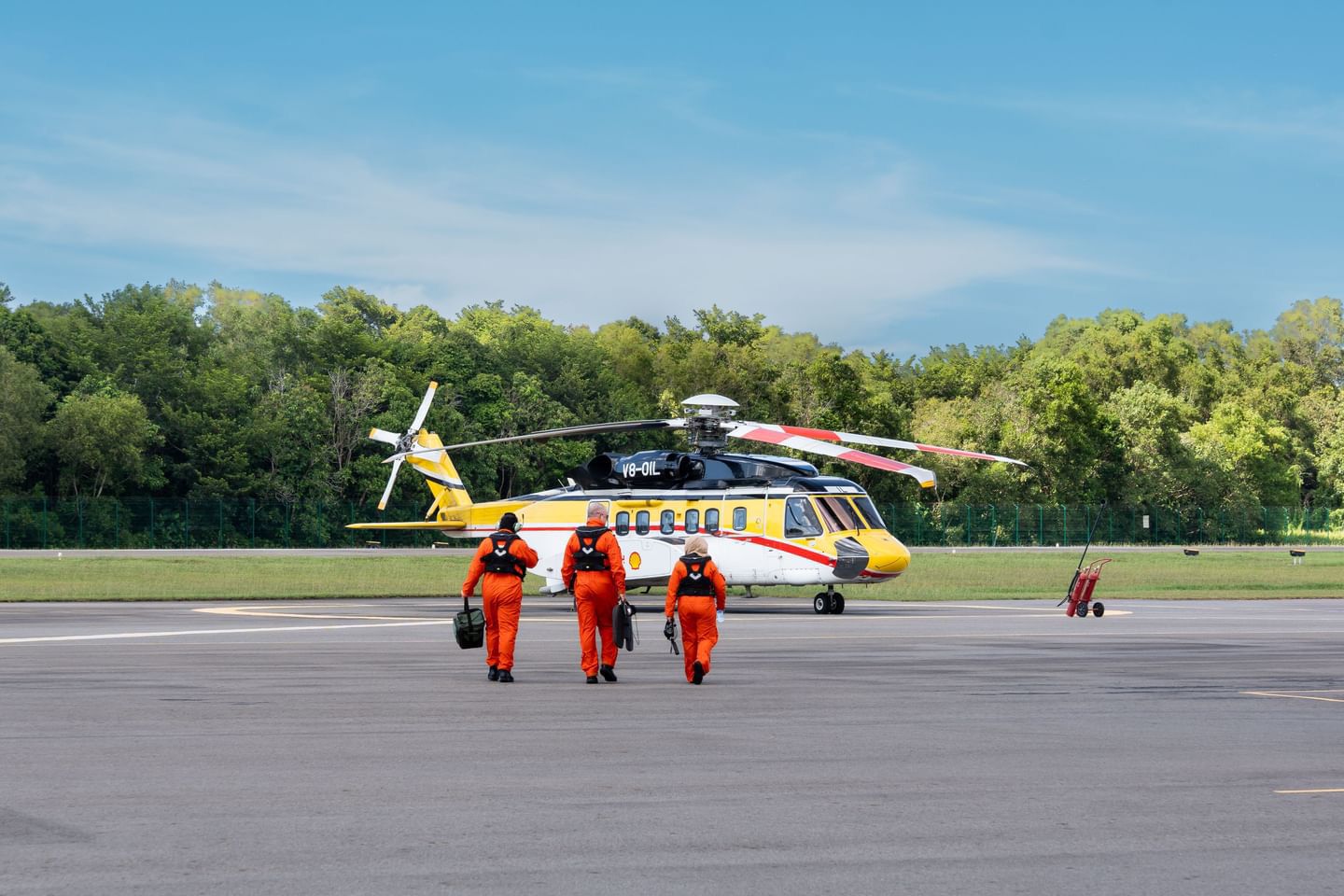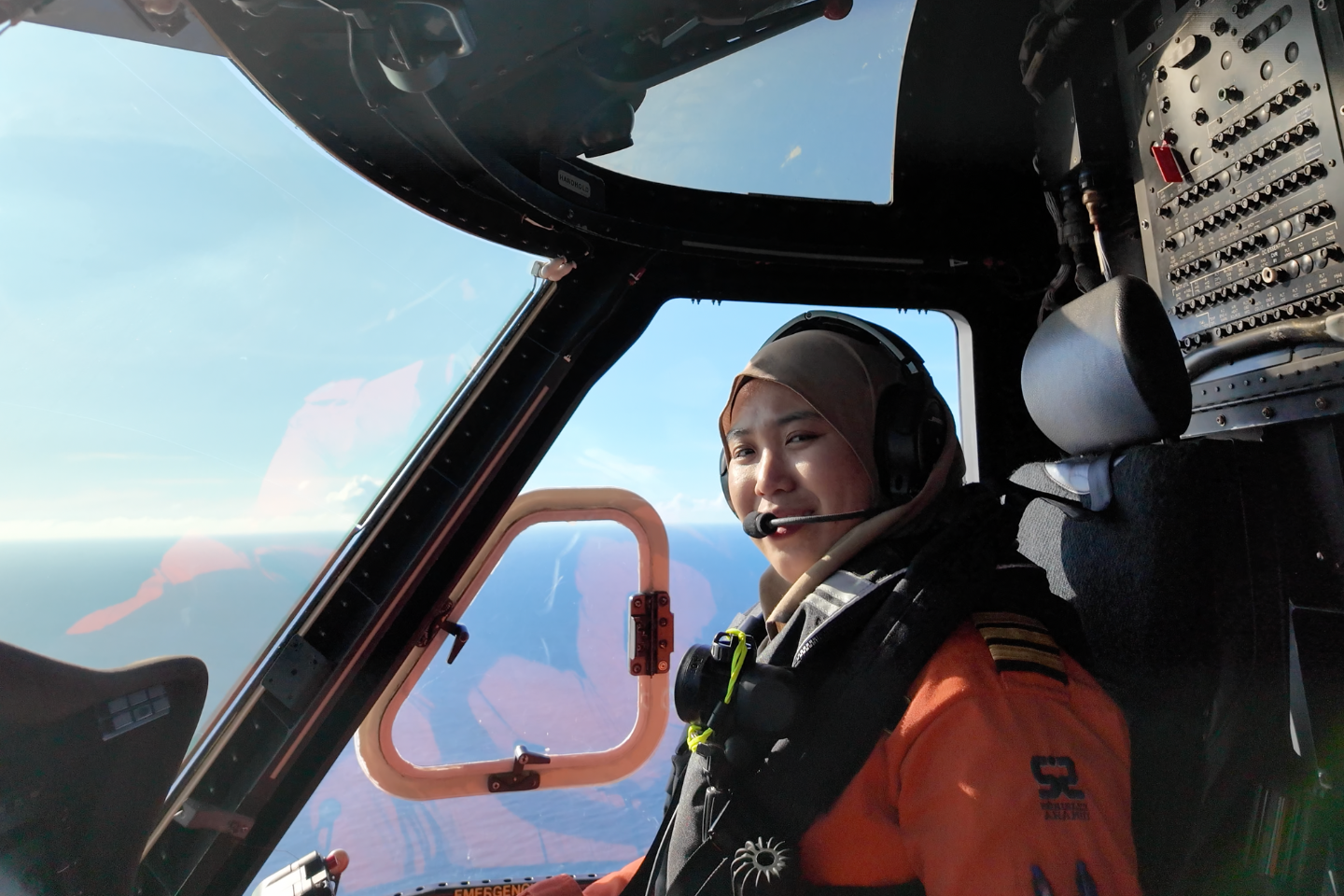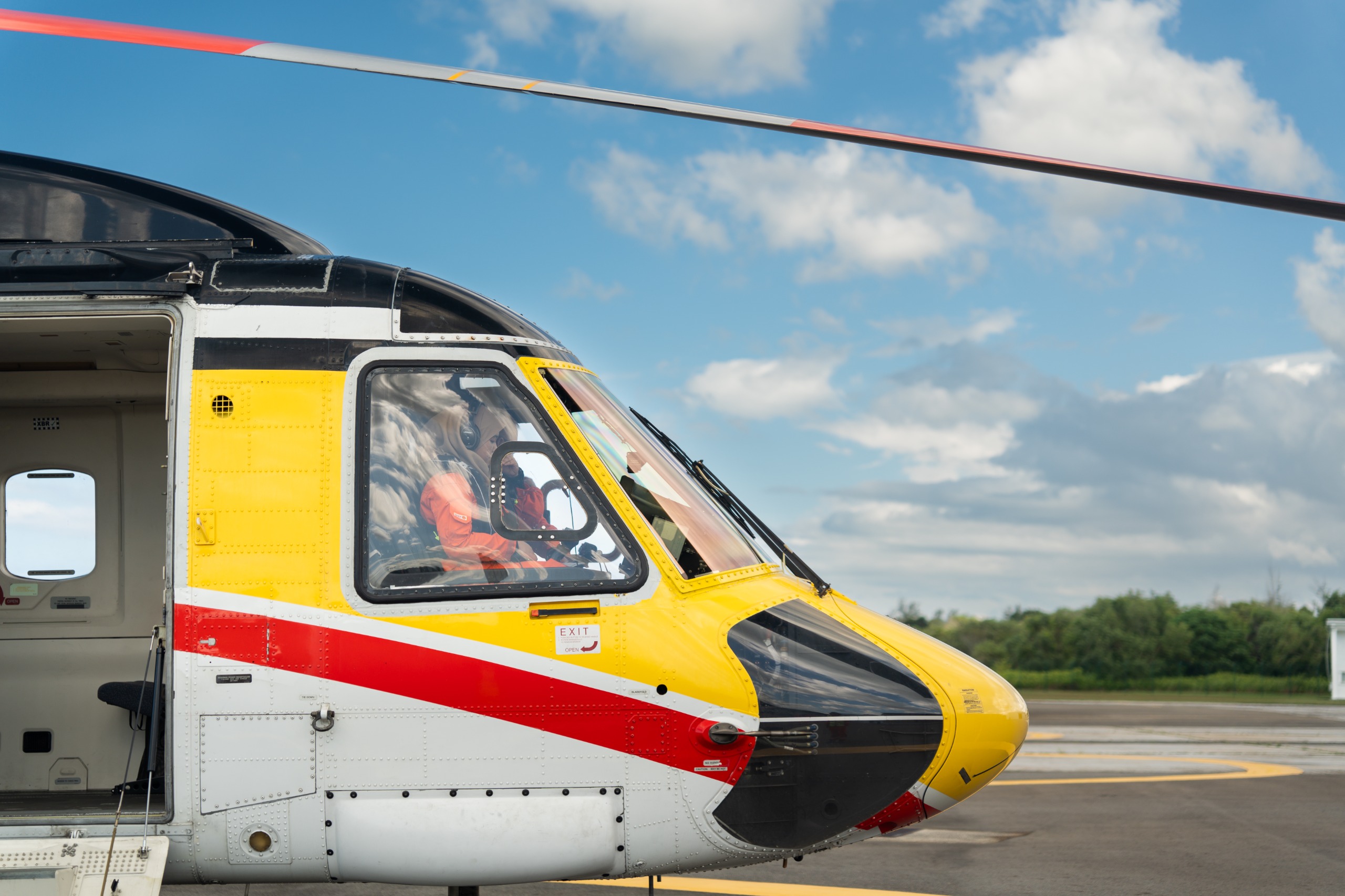Home > Media Centre > Salam Online > Day in the Life Of: BSP Helicopter Pilot
Published on December 4, 2024
When you hear the word pilot, images of carry-ons, stewardess, airports and foreign currencies would resonate. There would be visions of a commercial plane and perhaps, a gentleman in a hat with a wing pin.
At the Anduki airport in Seria, the sounds of rotors fill the air; a Helicopter Landing Officer (HLO) is there instead of a stewardess; and on a sunny Tuesday afternoon, the S-92 chopper named V8-OIL, is not handled by a man, but a five-foot something mother of two: Line Pilot Musyiirah is on duty.
Musyiirah is one of the pilots supporting BSP daily operations by transporting people and materials to offshore locations. Her role requires her to be at her best, especially during the monsoon season where the weather will not only test the strength of the chopper, but the skills of its handler.

START OF THE DAY
A typical day for a pilot would clock in about eight hours of work. Some days can be more challenging than others. For Musyiirah, looking at the sky can really paint a good picture of how work is going to be. Regardless of what the weather brings, it is important for Musyiirah to get enough rest before her commute and her work shift.
Loaded with the necessary gears, Musyiirah makes sure to arrive in Anduki at least an hour before her flight time. This would give her ample time to carry out her pre-flight routine.

PRE-FLIGHT CHECK
Pre-flight preparations are critical in ensuring a smooth and safe flight. Prior to shift, Musyiirah meets her on-flight partner for the day. Today, Musyiirah is accompanied by Captain Sean Matthews.
At the briefing room, flight details such as flight plan, weather conditions, flight durations, fuel consumption and Notice to Air Missions (NOTAMs) are reviewed and considered. It is the role of the line pilot to ensure that all check lists are considered, and all safety precautions and procedures are adhered to.

ON FLIGHT
Onboard, Musyiirah is giving her 100% - eyes locked and on guard for any potential change in situation.
Take-off and landing can be the trickiest part of the flight, especially during active weather. Utmost focus is needed to manoeuvre the chopper while a pilot is required to also monitor all engine parameters and prepare to take action should there be a hiccup. This is where the pilot buddy system also plays an important role. It ensures continuity if the unforeseeable happens.

END OF SHIFT
When the last flight is completed and the chopper touches down at Anduki, Musyiirah can already smell the end of day. Once the helicopter comes to a stop, ground crew would approach to commence the engine cleaning process and Musyiirah clears her checklist. She would document information such as remaining fuel and landing time.
Once everything is in place, Musyiirah would offboard and make her way to the briefing room where she will finalise all paperwork for documentation.
“It’s been a good flight and I’m looking forward to going home to my family – to my husband and two kids.”
And the day of a pilot would conclude, until the next run.

LIFE OF A FEMALE PILOT
“There is a stereotype that as a woman, you’re too small to fly a helicopter. Look at the heli they say - it’s big!” Musyiirah shares, referring to the physical stereotype associated with being a pilot.
“Flying is a demanding role and conventionally, it’s a male-dominated role. But know that it’s not an only male field – us ladies, we also have the courage, the mental capacity, the perseverance to be a pilot as well. So, if you think you are equipped to become a pilot, there is no difference whether you’re a male or female - it’s a job for everyone so give it a go,” she advises.